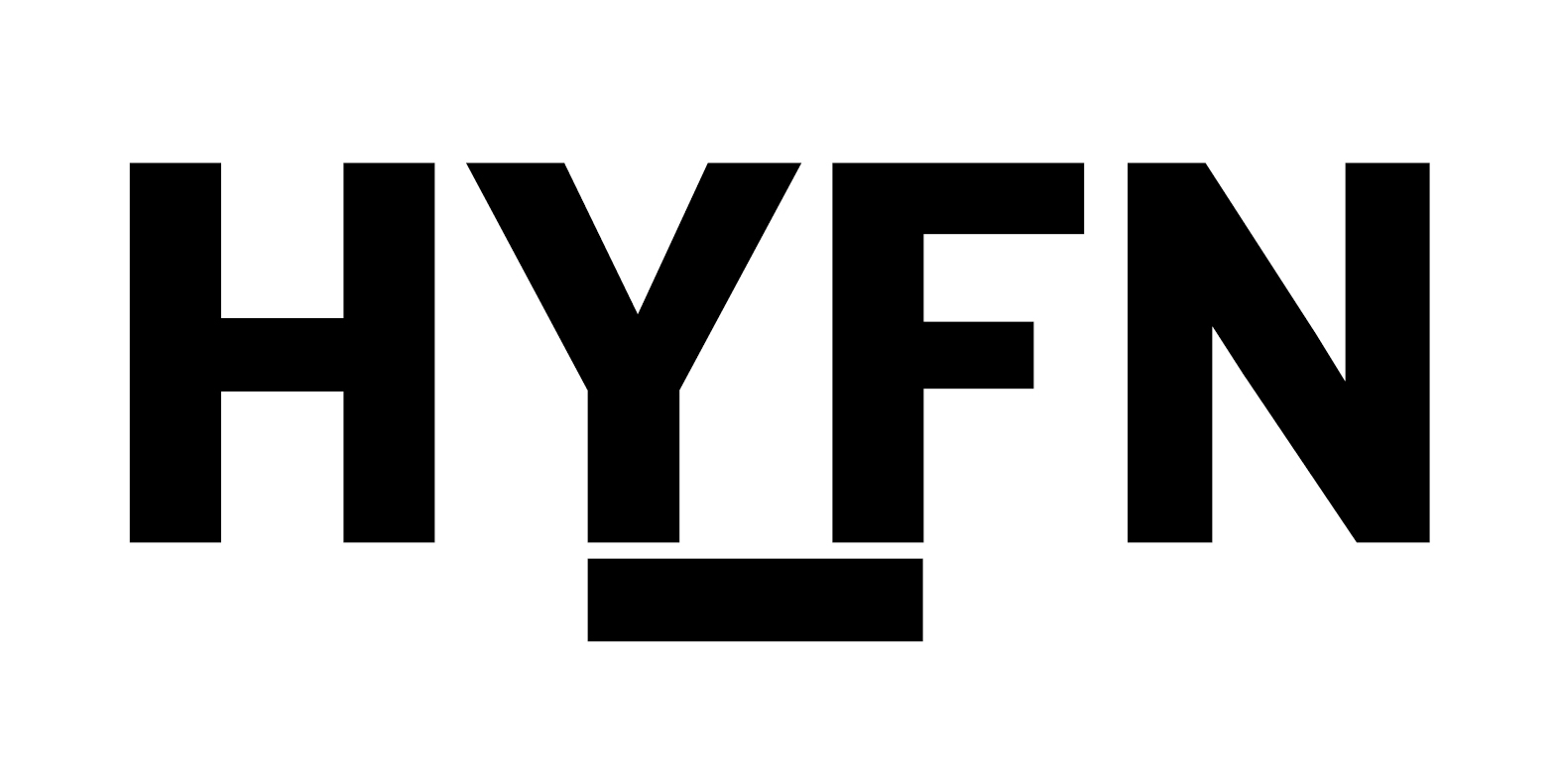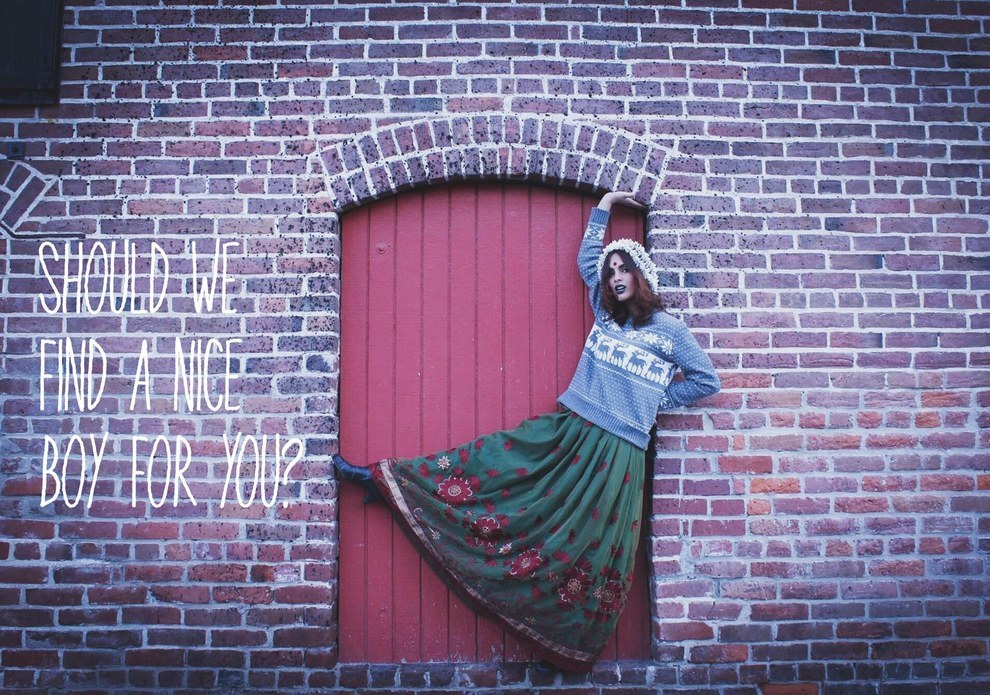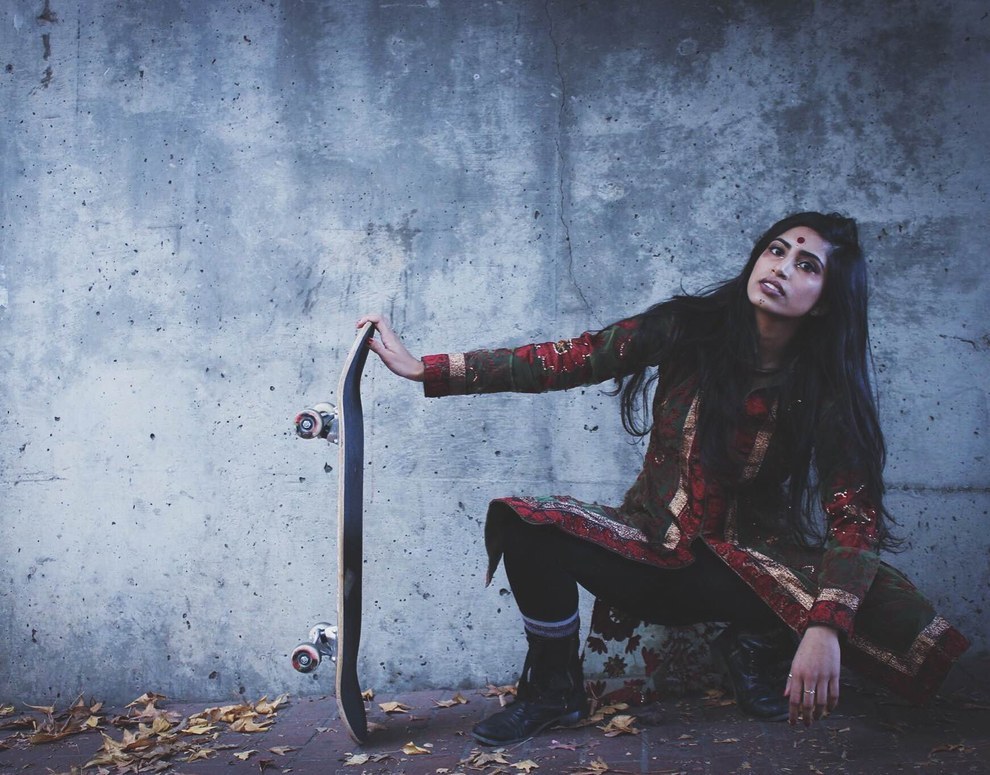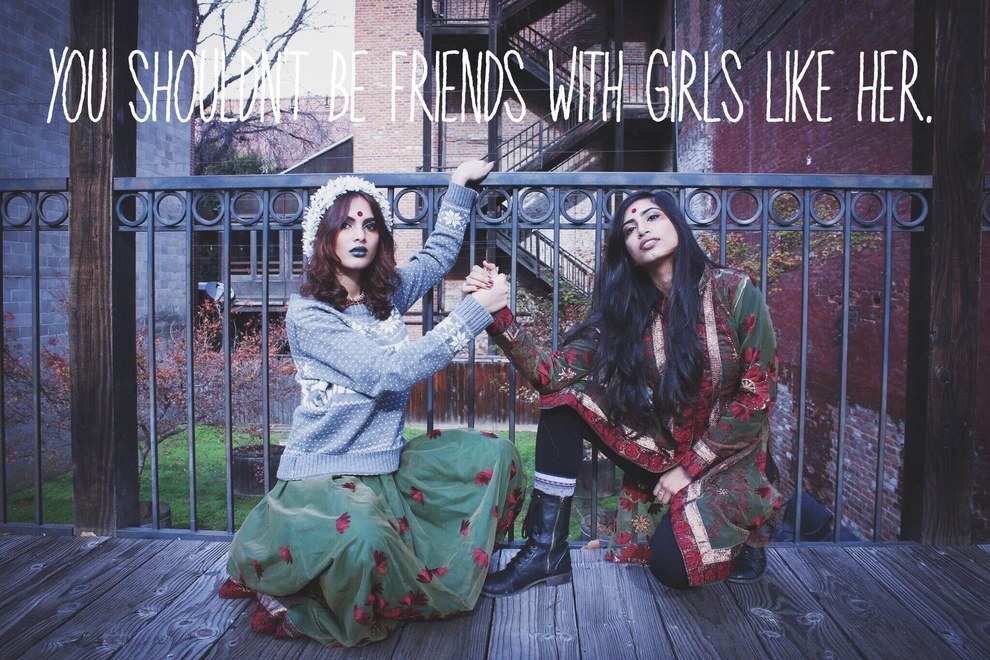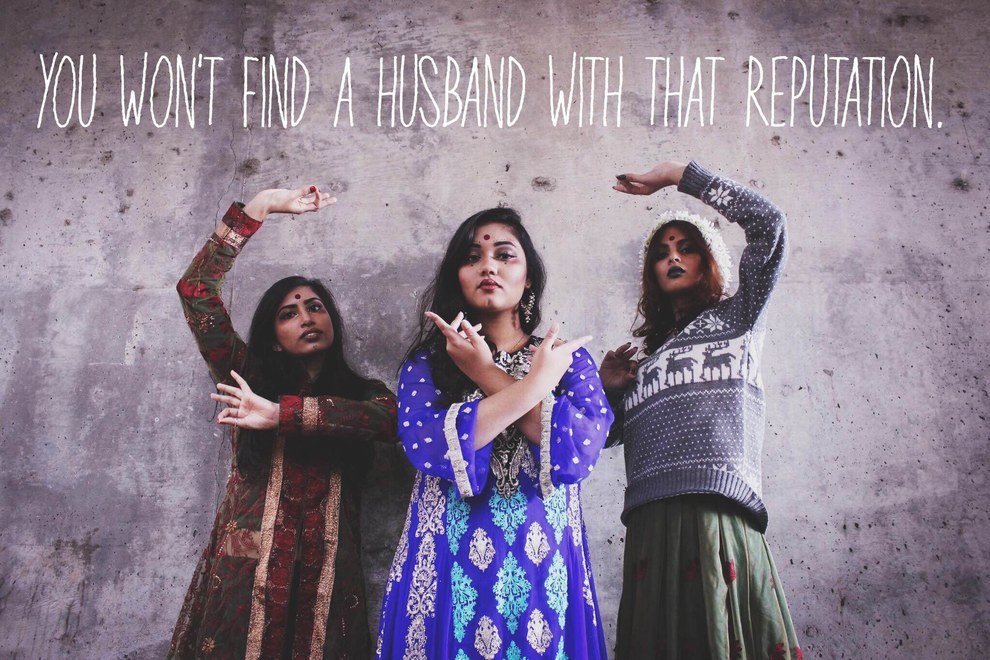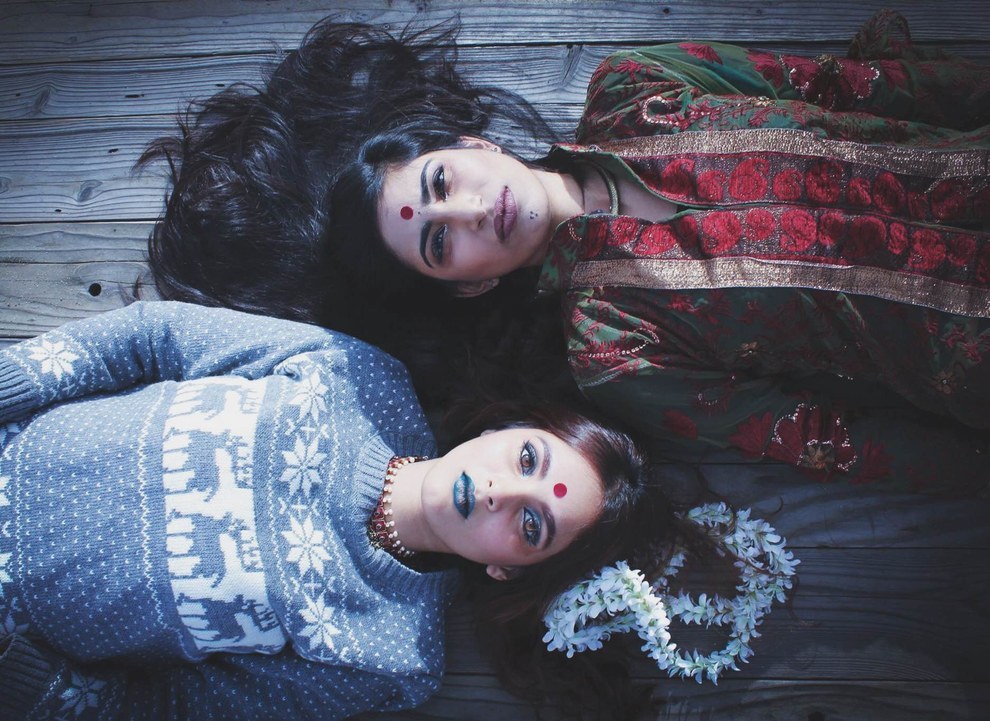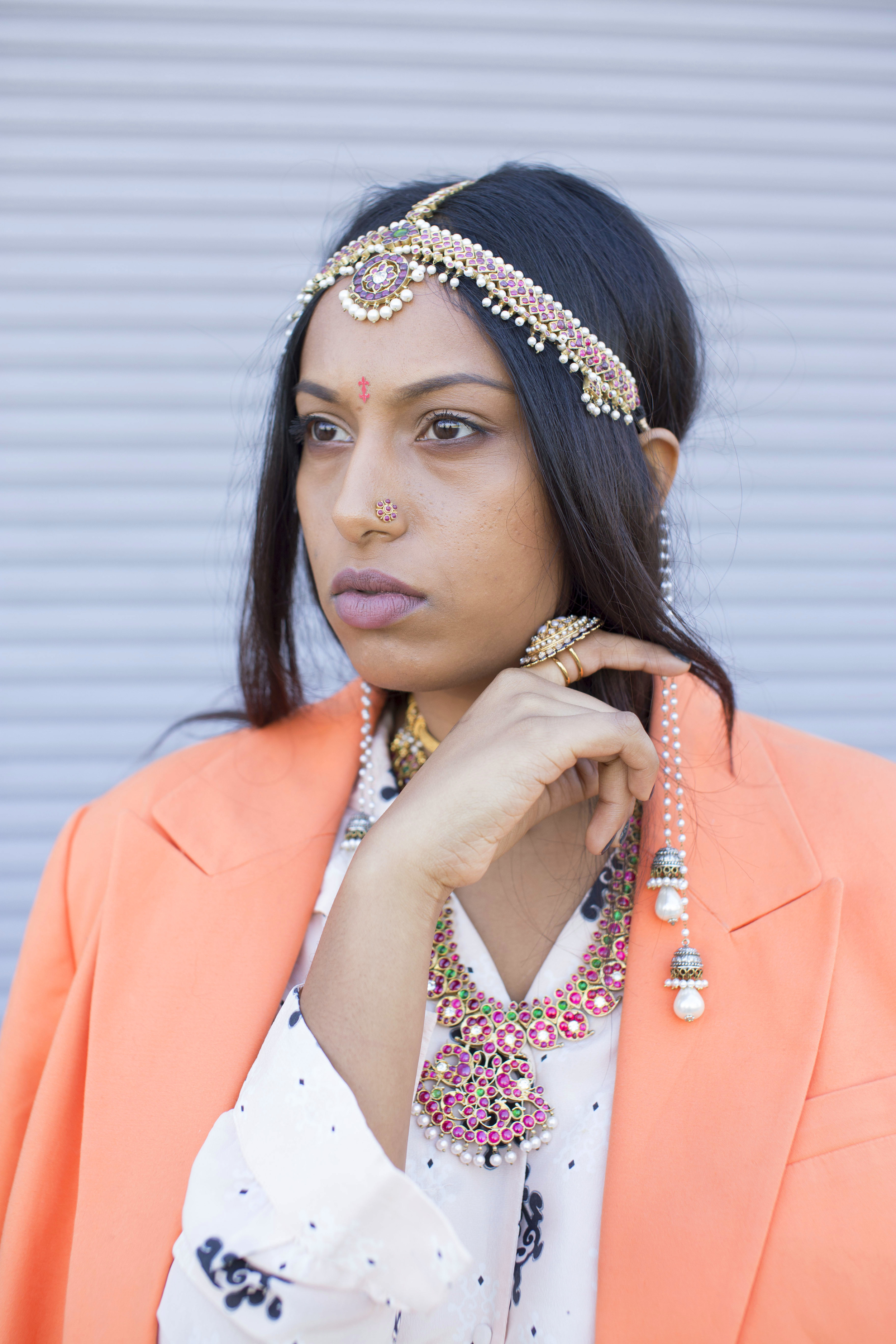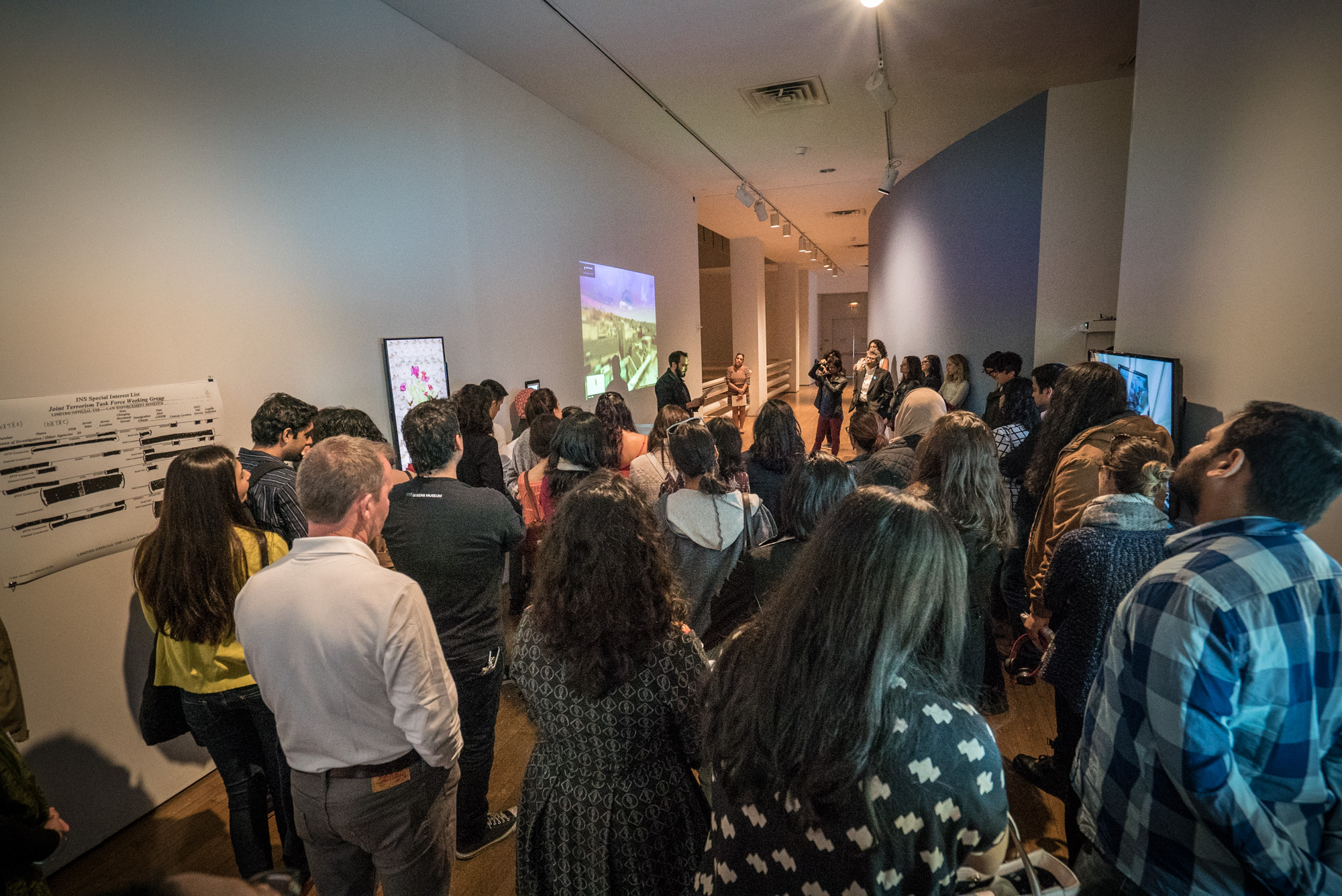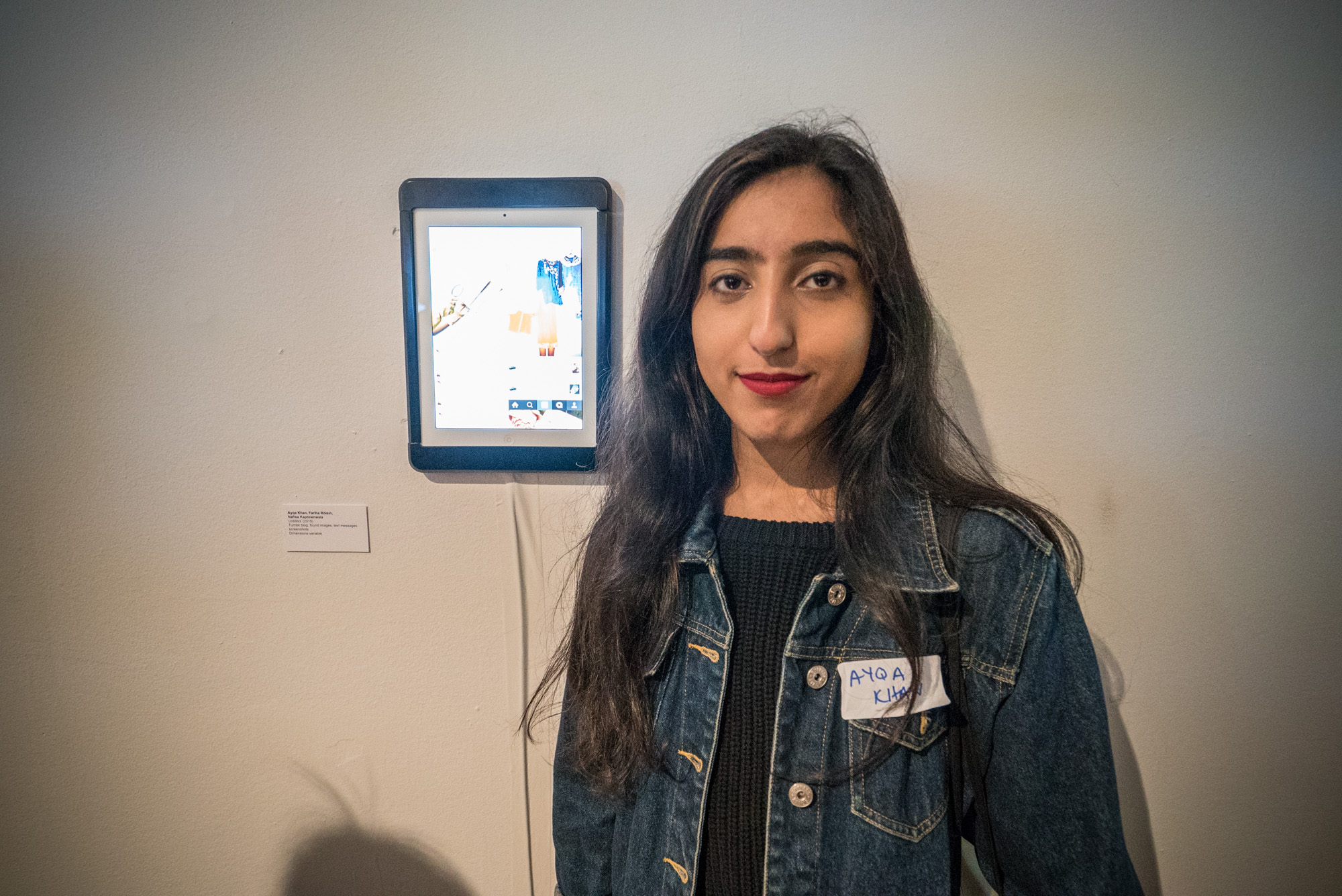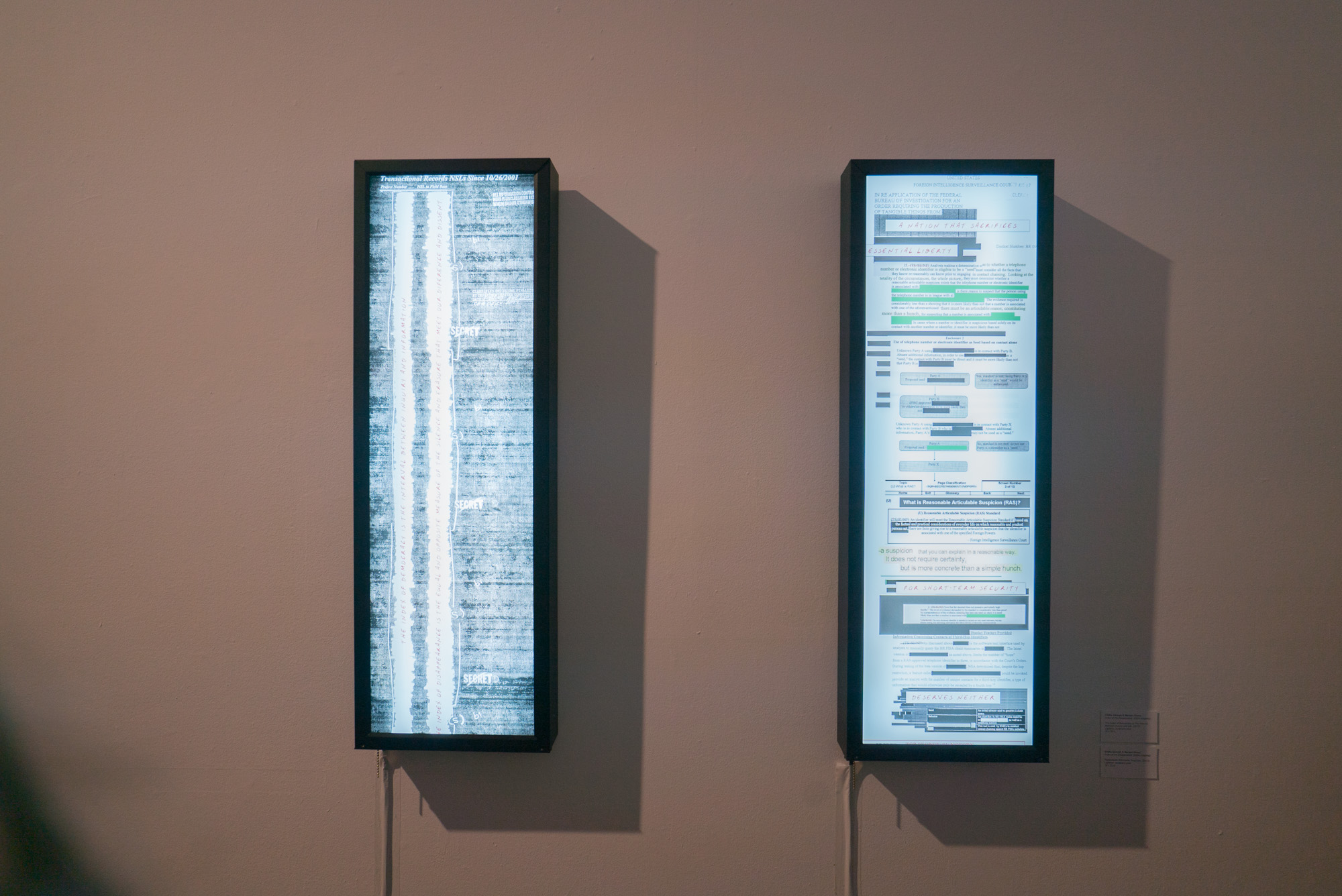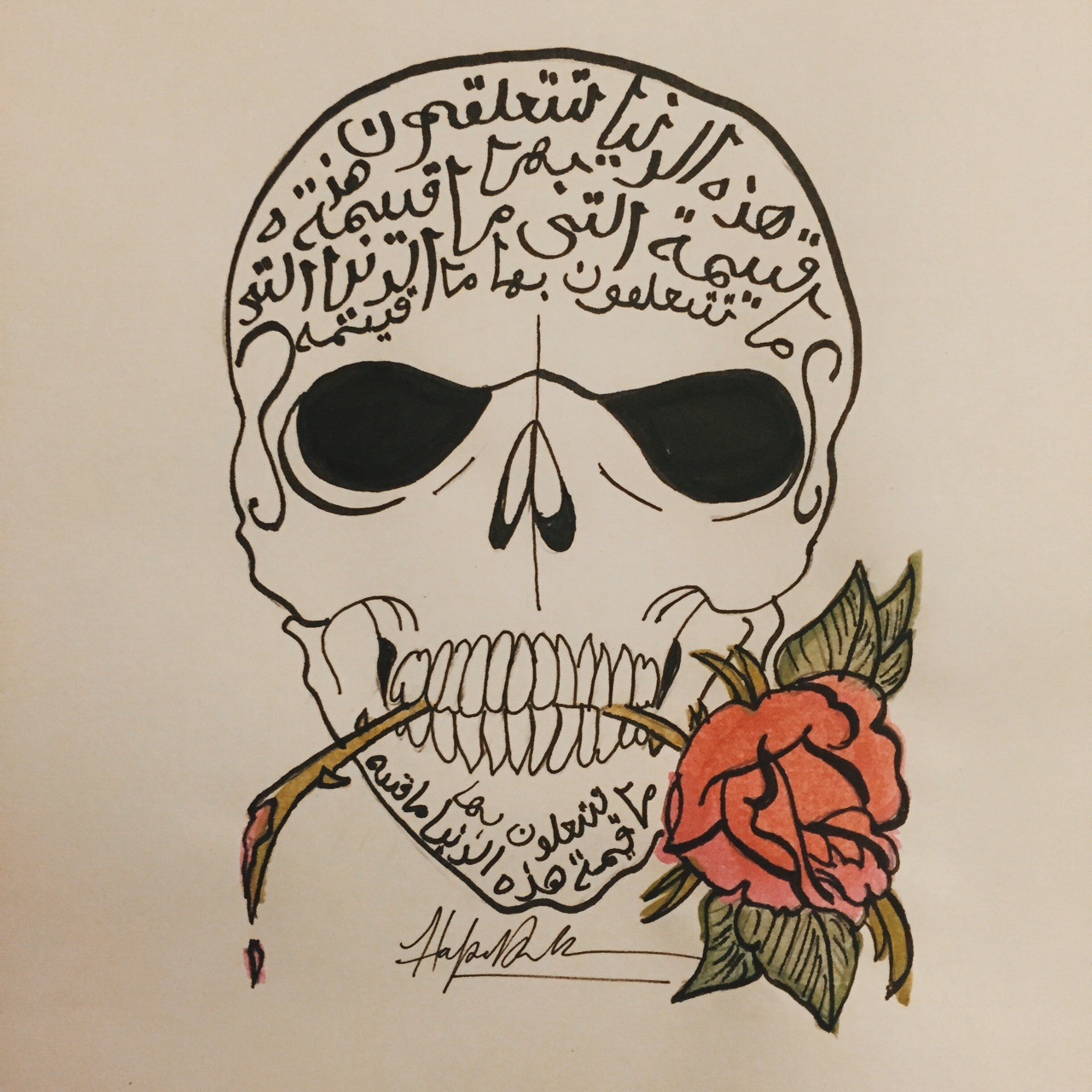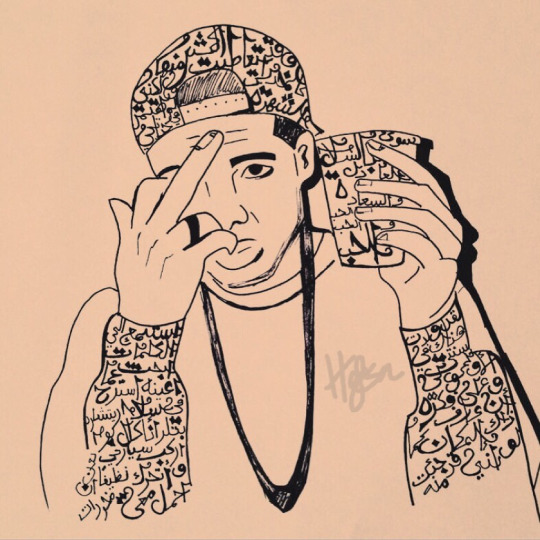Of course, you gotta do you and what you feel comfortable with. On that note, what challenges have you faced being a first generation embracing your heritage and your American culture?
"The issue I've specifically faced is an identity issue. The kinds of music and venues I like to go to are part of the African American community. The people that are my closest friends and that I've grown up with are Pakistani and Muslim. So I've fluctuated because I don't know where I fit in each of those social settings. The backlash with my art has been the traditional Muslim or Pakistani people within the community that don't like what I'm doing and often times think it's blasphemy since in Islam it says don't paint faces or draw people. And by adding in Arabic calligraphy they think I take it a little too far. But I think you can do that. They're not mutually exclusive. If you love the two things why not merge them and marry them together. "
And how do you not let the traditional viewpoints steer you away from doing what you do?
"I open a lot of eyes to Arabic calligraphy used in a different medium. A lot of people I know don't know anything about my culture, so I feel like I've done outreach by teaching them this is what it means and how you pronounce it. It's a little victory in my heart. It's like there's this conservative man who is mad that I did this but my art caused this one person to ask me what that meant and we had a conversation around it."
This is clearly something you love a lot, is it just going to stay a hobby?
"Well, I wouldn't call it a hobby. It's a lot more than a hobby, it's my creative expression. I grew up with society's standards of what a career is. A lot of brown people are instilled with this idea that creative arts can't be a career. I have a passion for the work I do in the government and working for the people. So it's about finding a balance and fulfillment between the two."
How would your parents feel if you decided to solely pursue art?
"My parents encouraged my creative outlet. They love what I do because it's different and they love that I incorporate my heritage. My house is covered with my calligraphy. I've never actually had that conversation. People are discouraged to pursue these things because they don't want to prove their parents right, but we should create an encouraging environment. Most of the people that want to do these things don't have that at home. There are probably kids out there that don't know that there's other people doing these things that look like them."
The digital era makes us more vulnerable to prejudices, criticism and cultural appropriation. But on the other hand, it also allows for cultural appreciation and evolution. Just like I found Haf on Instagram, social media has been an important tool for her as a young artist. It's helped her to find a lot of different people and ideas. She also attributes it to helping her embrace her Pakistani roots. It's easy to feel how comfortable she is with what she does and it seems like she is pulling from what she knows and how she feels. She says art is life and life is art. Social media also brought her the largest project she's ever done. And it's totally off the record. So, yes, you'll be hearing more from her soon!
